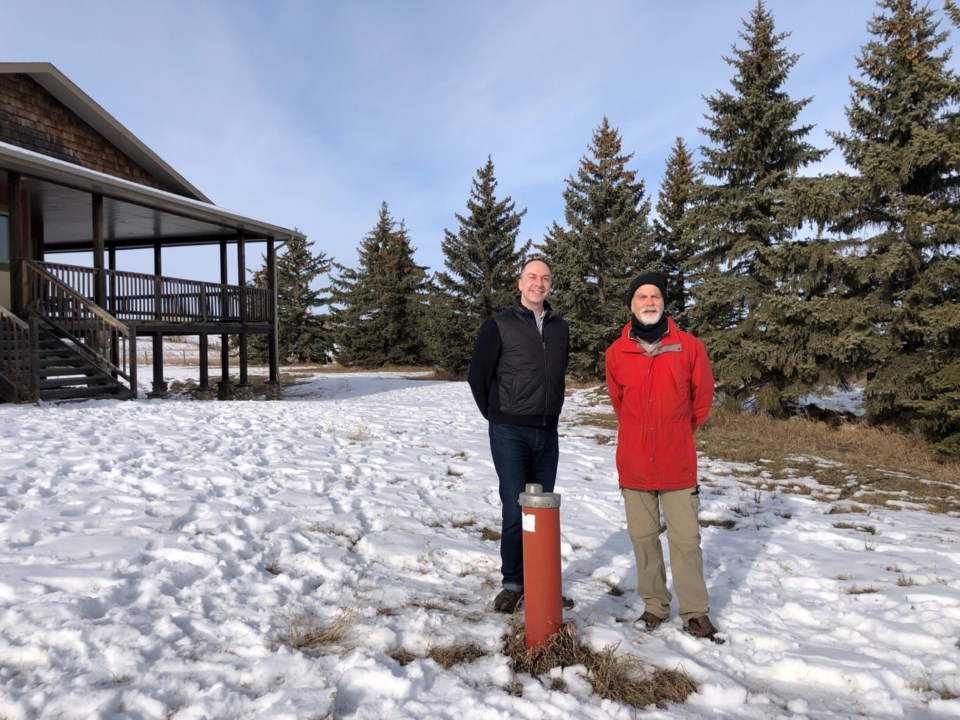A new study published by leading academics demonstrates an increase in radon exposure across Canada.
The report, called the 2024 Cross-Canada Survey of Radon Exposure in the Residential Buildings of Urban and Rural Communities, follows a similar report published in 2012. The newest study clearly indicates the number of high-radon homes has been increasing across Canada over the last decade.
According to the report, which included testing of over 75,000 homes for radon exposure, there are an estimated 10.3 million Canadians living in houses with high radon, increasing their risk of developing lung cancer.
The report reveals nearly 18 per cent of Canadian homes contain radon levels at or above 200 Bq/m³, the threshold at which Health Canada advises action to reduce indoor radon levels. That's more than double the seven per cent of households that were estimated to have radon levels at or above this limit in 2012.
The study's scientific lead, Dr. Aaron Goodarzi, is director of the Robson DNA Science Centre and lead of science communication for the University of Calgary’s Charbonneau Cancer Institute, and has dedicated much of his decades-long career to studying radon.
"The new Cross-Canada Radon Survey provides a greater understanding of how people living in Canada in the 2020s are being exposed to radon across our diverse communities, houses and regions," said Goodarzi.
"Alarmingly, this report concludes that Canadians are among the most highly radon-exposed people on Earth, and that means we urgently need to address this to avoid a future of prevalent but otherwise avoidable lung cancers."
The full report is available on the Cross-Canada Radon Survey website.
The dangers of radon
No part of Canada is "radon free and according to the report, there is a 16 per cent increase in lifetime risk of getting lung cancer for every 100 Bq/m³ in a home. Approximately one in six, or 15.5 per cent, of Greater Calgary homes surveyed contained at or above 200 Bq/m³ radon, and over one-third are between 100 to 199 Bq/m³.
Radon cannot be detected by human senses. It is odourless, tasteless, colourless and completely invisible, and the radioactive gas can be prevalent in indoor air and inhaled without any indication outside of testing with equipment.
Goodarzi described the danger as stemming from the fact that radon is a radioactive substance emitting alpha-radiation, which he said is akin to space radiation and creates genetic mutations in the lungs of those exposed.
“Canada has among one of the highest rates of lung cancer globally, despite one of the lowest rates of tobacco smoking,” said Goodarzi. “Two in five cases of lung cancer diagnosed in Canada today are of a non-tobacco origin, and one of the reasons for this is our record high exposure to other potent causes of lung cancer such as radon within the indoor air where we live, work and play.”
Children are particularly at risk of radon-induced cancer: their organs are still developing, making them susceptible to DNA damage from radiation exposure, and their overall exposure is greater due to their smaller size and faster breathing.
Radon exposure causes DNA damage and genetic mutations that may take 10 to 30 years to manifest in a lung cancer diagnosis, increasing lifetime risk substantially for children raised in a high-radon environment as well as Canadians working from home.
Radon is easily detectable and avoidable
Considering that radon is easily detectable and avoidable with proper equipment, Goodarzi urges households across Canada to undergo radon testing.
"Testing for radon is quite straightforward," he said. "The technology is good. It's affordable. Generally speaking, your typical radon test is somewhere between $50 to $60. You do that for three months in the house and you'll get a good idea of your radon.
"You need to do it for at least three months because radon fluctuates a lot over the short term ... and if you do have high levels, the good news here is it's fixable. It's one to two days work in the property. It's a permanent fix to the house."
Goodarzi said hiring a radon mitigation professional is just like getting any other contractor to fix something in the house.
"There's great professionals out there who are certified in Canada to do this," he said. "They know what they're doing. It's a building science and they have what's called C-NRPP or Canadian National Radon Proficiency Program certification.
"There's very few things that give us cancer in this world that are so easy to remove."
Evict Radon, a national cancer prevention study led by Goodarzi, offers test kits. Learn more about the study and ordering a kit here.
People throughout Southern Alberta can also borrow radon test kits for up to three weeks from their local library through Marigold Library System. Learn more about borrowing a kit from the library here.




